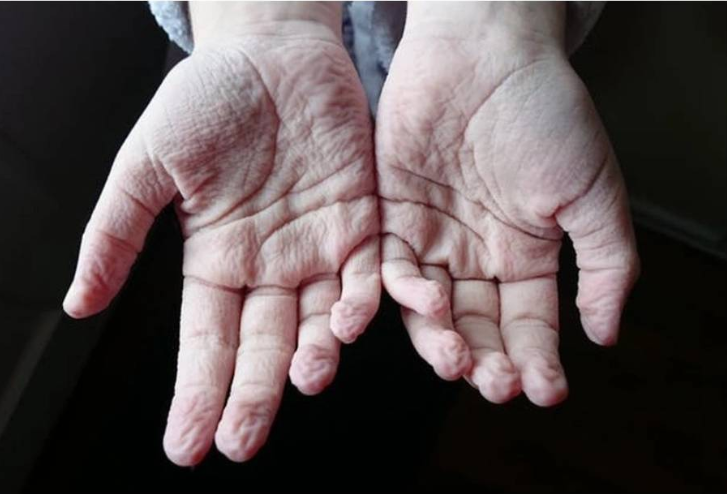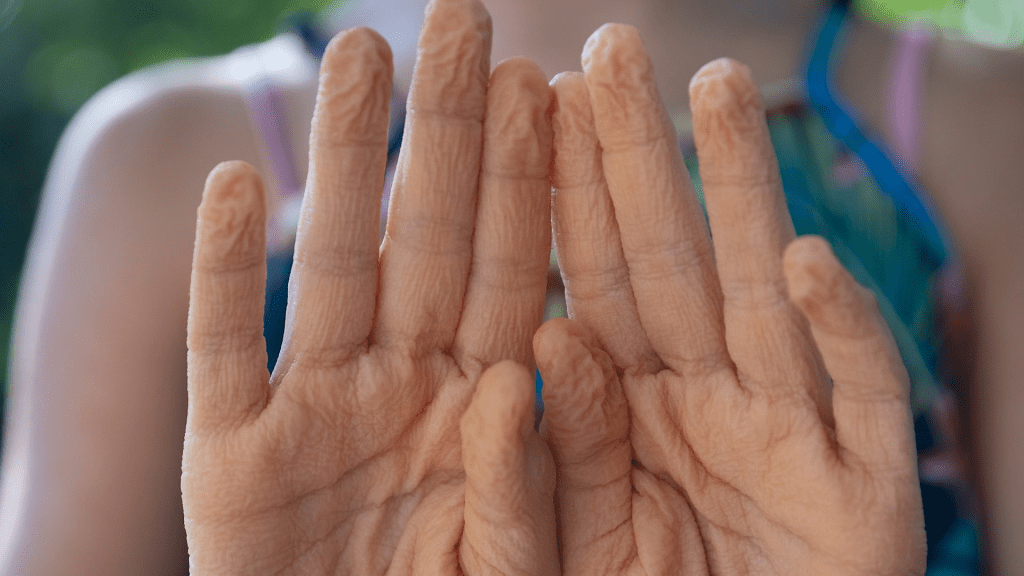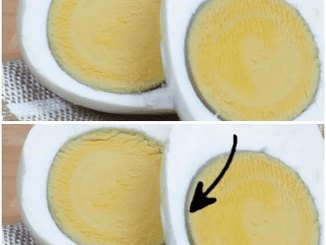Ever noticed how your fingers and toes wrinkle up after a long soak in the bath or a swim? This common phenomenon has sparked curiosity for generations, and while it may seem like a simple reaction to water, there’s a lot more happening beneath the surface of your skin. Let’s dive into why your hands wrinkle in water, what it indicates about your body, and when it might signal something more serious.
The Basics: Wrinkling as a Response to Water

The skin on our hands and feet reacts to prolonged exposure to water by forming wrinkles, particularly on the fingertips and toes. But why does this happen?
- Water Absorption: The outermost layer of your skin, the epidermis, contains a tough protein called keratin. This layer is protected by natural oils that repel water, but when submerged for extended periods, these oils begin to wash away. As the water penetrates the skin, the skin cells swell, leading to a temporary increase in volume and the classic wrinkled appearance.
- Dehydration of Skin Cells: Interestingly, the wrinkling process doesn’t mean your skin is becoming more hydrated. Instead, water exposure causes a loss of moisture in certain layers of the skin, leading to a shrinking effect in underlying tissues, which pulls on the outer layer and creates wrinkles.
But here’s the fascinating part: the process is not entirely passive. In fact, it’s controlled by your body’s nervous system.
The Role of the Nervous System in Wrinkling
You might be surprised to learn that pruney fingers aren’t just a byproduct of soaking in water. Research shows that our bodies intentionally wrinkle the skin on our hands and feet, and it’s actually controlled by our nervous system.
- The Nervous System’s Control: A study conducted in Idaho, USA, revealed that people with nerve damage in their fingers don’t experience the same wrinkling effect when exposed to water. This discovery suggests that the wrinkling phenomenon is not merely a physical reaction but rather a purposeful response triggered by the sympathetic nervous system.
- Enhanced Grip Hypothesis: Why would our bodies evolve to wrinkle our fingers in water? One leading theory is that the wrinkling improves grip in wet conditions, much like treads on a tire. Wrinkled skin may allow us to handle slippery objects more effectively, offering a survival advantage when dealing with wet or submerged items.
This connection to the nervous system shows that pruney fingers are more than just a quirky reaction; they’re an adaptive feature with a practical purpose.
Health Concerns: When Wrinkling Might Signal a Problem
While water-induced wrinkles are entirely normal, if your skin wrinkles with minimal or no water exposure, it could indicate underlying health issues. Here are a few conditions that may cause this abnormal wrinkling:
- Diabetes:
- Diabetes affects the body’s ability to regulate blood sugar, which can have an impact on the sweat glands. Reduced sweat production leads to drier skin, which, in turn, can cause the skin to wrinkle more easily, even without water exposure.
- Diabetic patients may notice wrinkling along with other symptoms like increased thirst, frequent urination, and fatigue. If you experience abnormal wrinkling along with these symptoms, it’s a good idea to speak with a healthcare provider.
- Eczema:
- Eczema is a skin condition that causes inflammation, dryness, and irritation. For people with eczema, the skin may react to water with increased wrinkling, redness, and itching. Since the skin’s protective barrier is compromised, it may become more susceptible to wrinkling when exposed to water.
- If you frequently experience itchy, inflamed, and wrinkled skin, consult a dermatologist for proper diagnosis and treatment.
- Raynaud’s Disease:
- Raynaud’s disease affects blood circulation, particularly in the fingers and toes. It causes blood vessels to narrow, limiting blood flow to these areas and resulting in symptoms like coldness, numbness, and wrinkling.
- People with Raynaud’s often experience wrinkling as their skin becomes more susceptible to temperature changes. If you notice these symptoms, especially in cold conditions, talk to a healthcare professional about managing the condition.
- Hyperthyroidism:
- Hyperthyroidism occurs when the thyroid gland produces too much thyroid hormone, affecting various bodily functions. This can lead to symptoms such as dry skin, temperature sensitivity, and unexpected wrinkling.
- Since the thyroid influences metabolism and blood flow, irregularities in thyroid function can cause skin to wrinkle easily. Testing and treatment can help manage symptoms effectively.
- Lymphedema:
- Lymphedema is a condition where excess lymph fluid builds up, usually in the arms and legs. The swelling caused by lymph fluid accumulation can lead to wrinkling, especially in areas where the skin is thinner, like the fingers and toes.
- Wrinkling due to lymphedema often occurs with symptoms like swelling, discomfort, and restricted movement. If you suspect you have lymphedema, a healthcare provider can help you manage the condition.
Why Does Water Affect Only Certain Areas?

You might wonder why we don’t wrinkle all over when we’re in water for too long. Wrinkling primarily affects the skin on our hands and feet for a few reasons:
- Thicker Skin: The skin on our palms and soles is thicker and contains more keratin, which makes it more susceptible to water absorption. The structure of this skin layer is ideal for creating wrinkles, unlike the thinner skin on other parts of our body.
- Evolutionary Adaptation: Some researchers believe that our hands and feet wrinkle specifically because these areas are used for gripping. Wrinkling might be less useful for other parts of the body, which is why it’s primarily localized to the palms and soles.
The Myth of Water Absorption and Skin Swelling
A common misconception is that wrinkling happens because our skin absorbs water like a sponge. While it’s true that water penetrates the outer layer, the process isn’t as straightforward as swelling alone.
- Epidermal Reaction: The outer layer of skin absorbs water, but rather than causing swelling, this triggers a reaction that makes the skin tighten and wrinkle. It’s not the extra water that directly causes the wrinkling but rather a reaction in the skin’s cells that leads to a shrinkage effect, pulling the skin downward and creating folds.

This combination of factors—water interaction with keratin, neural response, and evolutionary adaptation—explains why wrinkling is such a unique phenomenon.
Conclusion: Wrinkling is More Than Just Skin-Deep
So, why do our hands wrinkle when soaked in water? It’s a combination of water absorption, nervous system control, and possible evolutionary advantages. While the process may seem trivial, it reflects the complexity of our bodies and the subtle ways our biology adapts to our environment.
Next time you notice your fingers wrinkling after a long bath, you can appreciate it as an impressive interplay of biology and evolution. And remember, while pruney fingers are perfectly normal, if you experience excessive wrinkling without much water exposure, it might be worth discussing with a healthcare professional. It’s just another reminder that our bodies are always communicating with us—sometimes, even through the little things like wrinkles.


